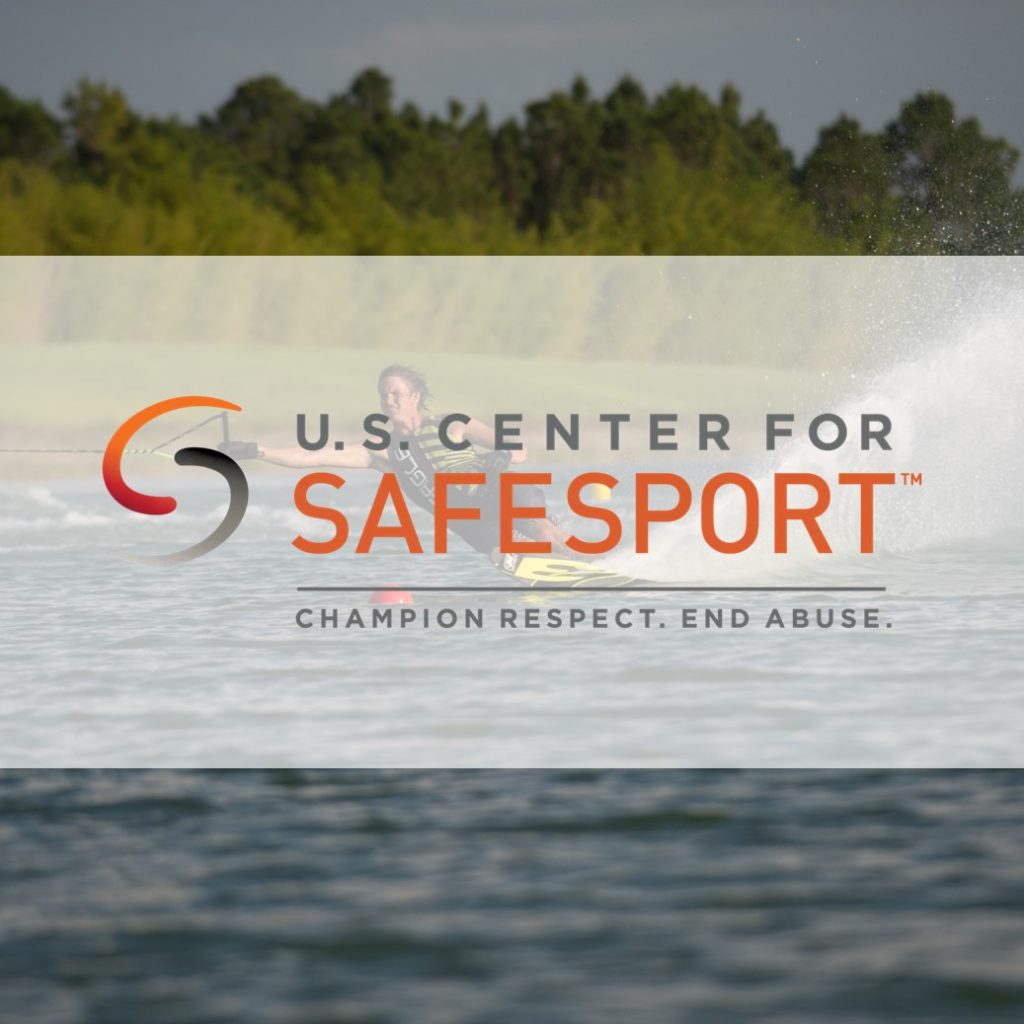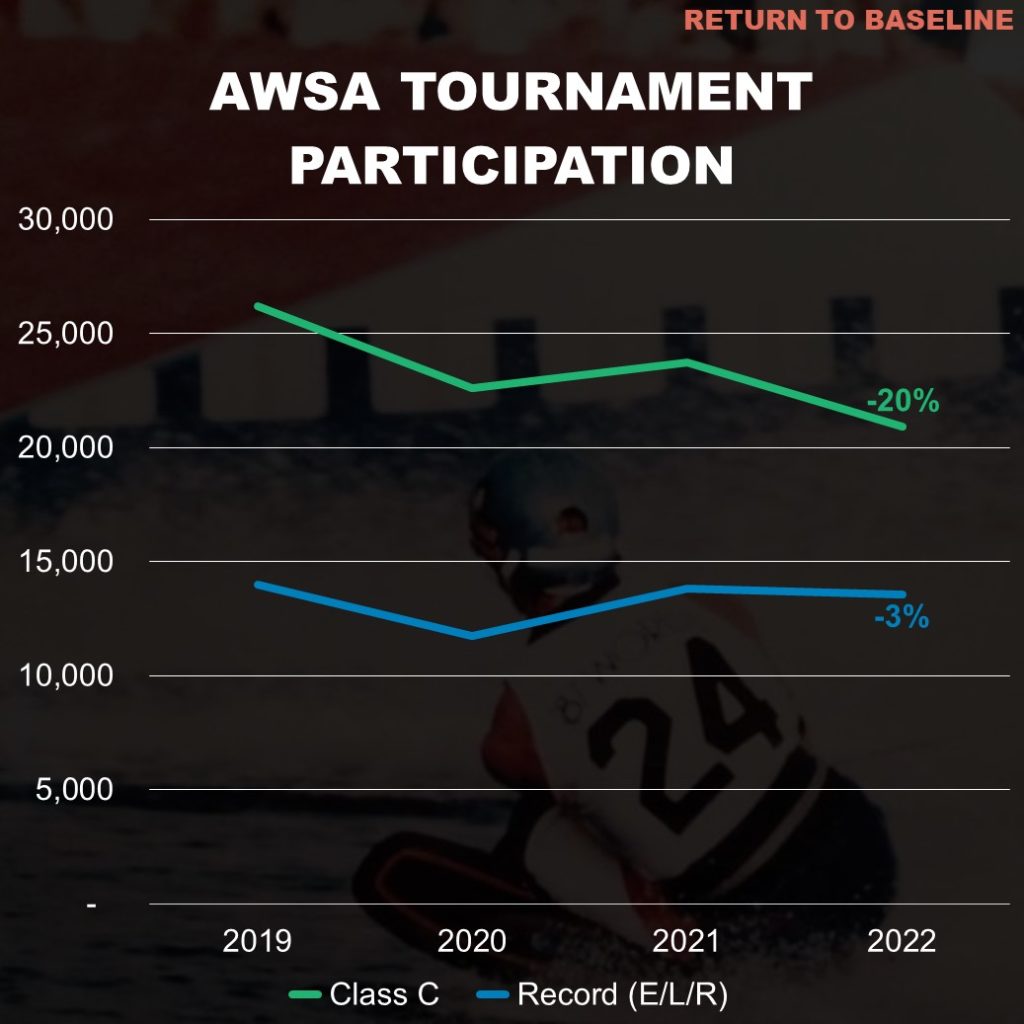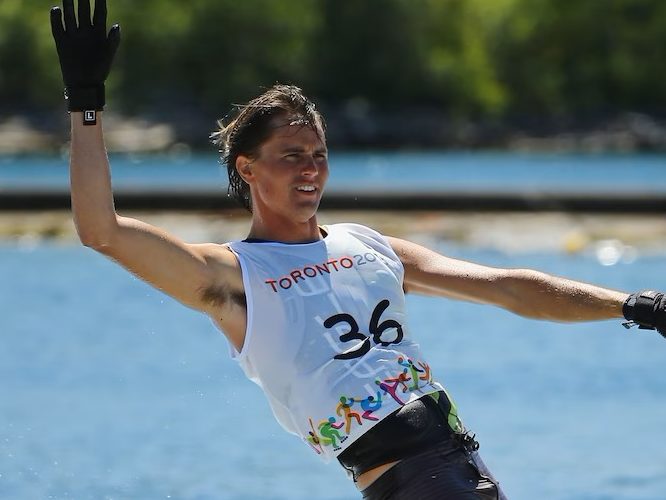SafeSport, USA Water Ski, and the Decline of Tournament Participation

Image: Aaron Katen
By Jack Burden
In 2022, USA Water Ski and Wake Sports (USAWS) implemented mandatory SafeSport training for all its members. This decision sparked controversy and heated debates among members (see the 36 pages of bickering on BallOfSpray). However, USAWS had little choice in the matter as the U.S Olympic Committee (USOC) imposed the requirement via Congressional mandate. Even if they were to break away from the USOC, any alternative organizing body would still face the challenge of obtaining exorbitantly priced or unattainable insurance coverage without a similar program in place. As we reflect on the past year, it becomes crucial to evaluate the impact of this mandate on tournament participation within the water skiing community.
The training aims to enhance awareness and prevent the sexual exploitation of minors in the sport, thereby ensuring a safer environment for young athletes. The initial course takes approximately one hour, followed by a brief 15-minute refresher annually, and is required for all members, including those unlikely to directly supervise youth activities. The concern lies not in the quality of the training—no one disagrees with its goals—but rather in the potential for adding another requirement for USAWS membership to further diminish the perceived shrinking membership base.
So, what does the data say? Tournament participation did indeed decline in 2022. However, this decline is part of a longer-term trend. Determining the specific impact of the SafeSport Mandate and whether it accelerated this decline is more challenging. In 2022, there were 220 fewer tournament participants compared to 2021—a decline of 7%. While significant, it pales in comparison to the 440 participants lost in 2020 during the height of the pandemic, of whom only about half returned in 2021.

Total rounds skied by class 2019-2022 (Source: USA Waterski)
Notably, there has been a consistent decrease in Class C tournament participation over the years. Conversely, record tournament participation has remained relatively stable over the past four years. This aligns with the notion that skiers who are more invested in the sport are more likely to undertake a one-hour training course or continue skiing despite a pandemic. Fluctuations in participation primarily occur among casual skiers who only compete in a few Class C tournaments per year, as they assess whether a $90 USAWS membership, a one-hour course, and tournament entry fees are worthwhile for the upcoming season.
Delving deeper into the trends of 2022, we observe clear patterns. Tournament participation at all levels experienced a setback in 2020, followed by a rebound in 2021. However, while record tournament participation remained unchanged from 2021 to 2022, Class C participation declined by 10%. Similarly, among skiers who enter five or fewer tournament rounds per year, membership declined by 15%, despite remaining relatively stable from 2019 to 2021.
For those concerned about the future of our sport, particularly at the grassroots level, these trends are alarming. Without a robust base of casual skiers, we lack a stable foundation for the expanding infrastructure of high-level competitive water skiing. The professional water skiing scene, thanks to TWBC, Waterski Pro Tour, and the WWS Overall Tour, is currently the strongest and most exciting it has been in the past 15 years.
Of course, declining tournament participation can be attributed to other factors, with affordability and accessibility being chief among them. Unfortunately, we find ourselves in a vicious cycle: as the market for big-ticket items like ski boats shrinks, manufacturers continue to reduce production and position their boats as luxury items, further exacerbating the issue.
This is not to place the blame on SafeSport either. As noted at the outset, USAWS was compelled to act, and our sport is not immune to issues of sexual exploitation of minors. It is difficult to quantify the value of preventing another Larry Nassar.
The unfortunate reality is that SafeSport presents yet another barrier to the sport’s growth, and it is not going away. To attract more casual skiers, who make up a substantial portion of potential tournament participants, we need to find ways to increase the value proposition of tournaments. This may involve innovative formats, social activities, or lower entry fees. It is an uphill battle, but for the dedicated members of our community, it is a battle worth fighting.



